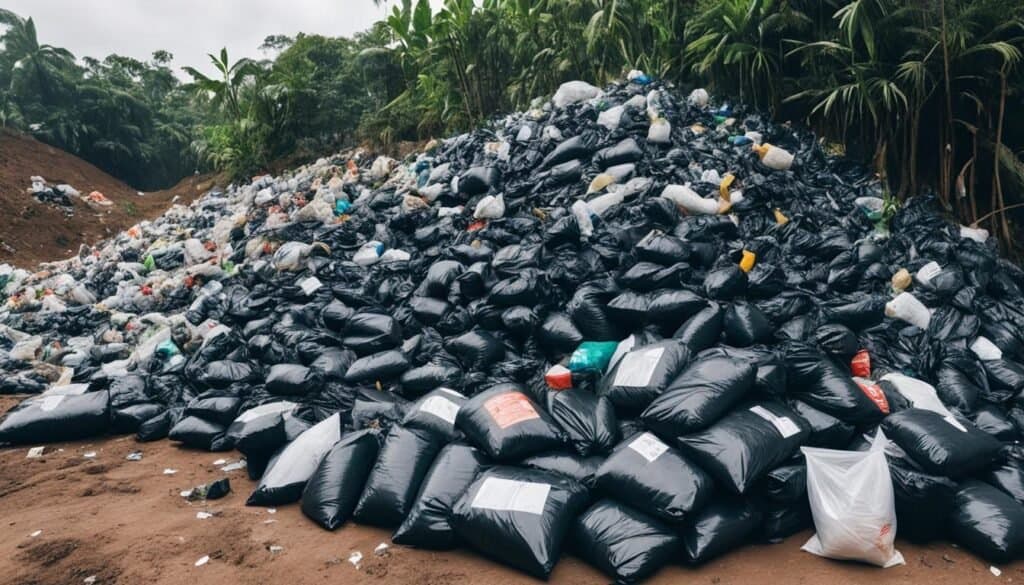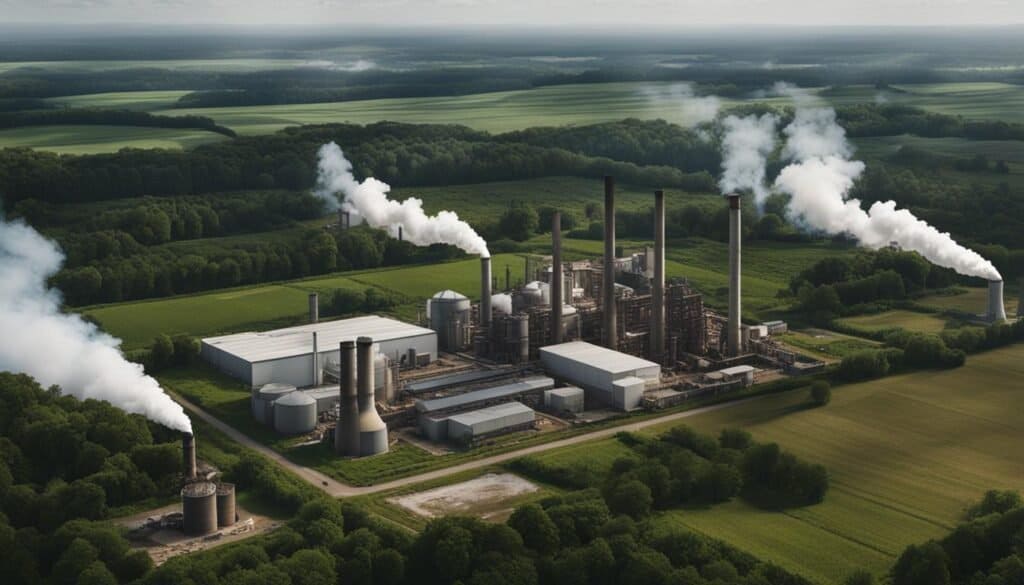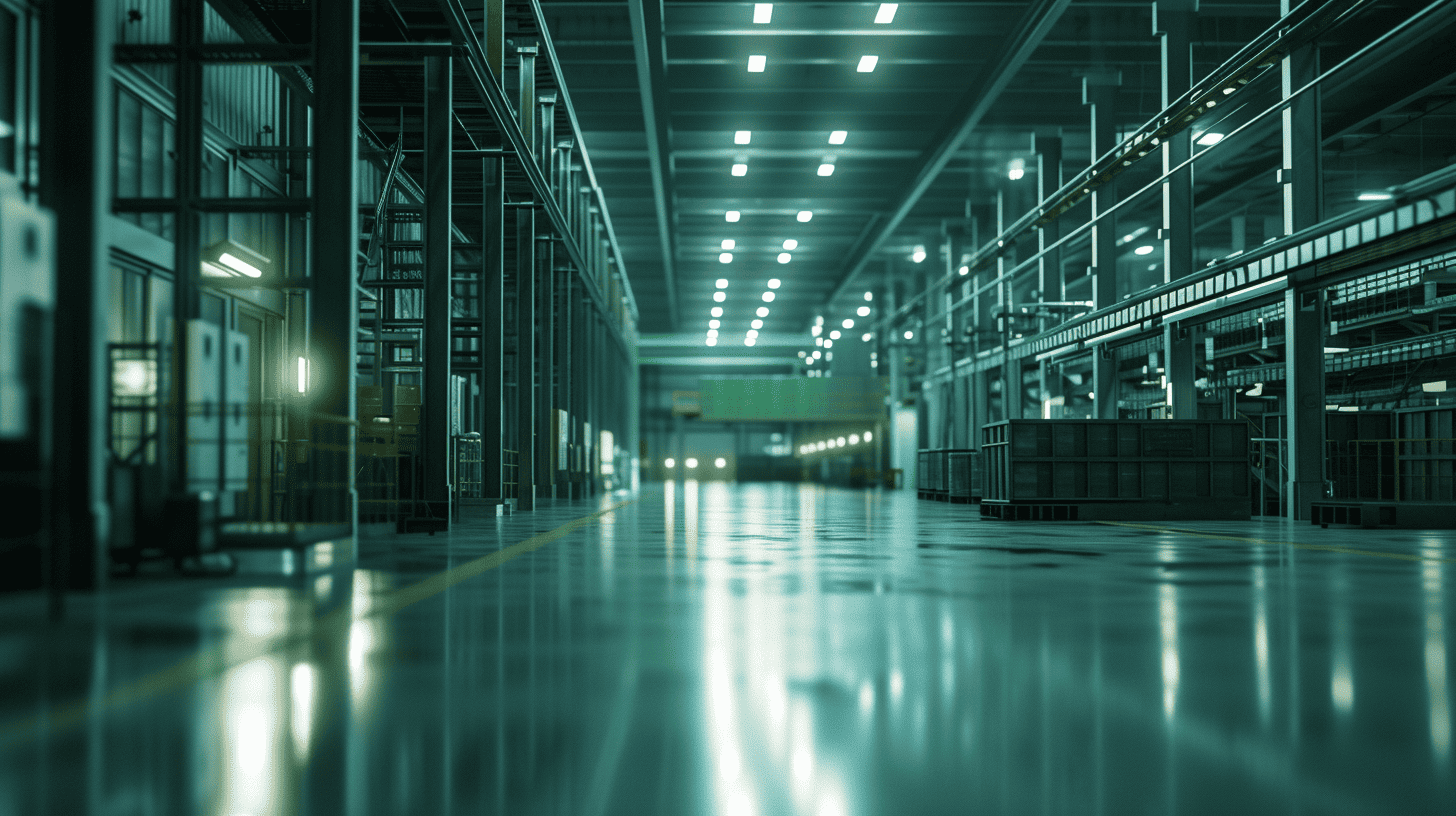As a growing concern for our environment becomes increasingly prominent, the shift towards biodegradable plastics proves to be a necessary and beneficial change. Compared to traditional plastics, these eco-friendly alternatives offer a range of advantages that address pressing issues such as plastic waste and environmental impact. In this comprehensive guide, I will walk you through the distinct benefits of biodegradable plastics and why they serve as a sustainable and innovative solution for our future.
Key Takeaways
- Biodegradable plastic offers a more eco-friendly solution compared to traditional plastic.
- Switching to biodegradable plastics can help reduce plastic waste and environmental impact.
- Biodegradable plastics are compostable and derived from renewable resources.
- The manufacturing process of biodegradable plastics requires less energy and resources.
- Adoption of biodegradable plastics can lead to economic growth and market expansion.
- Biodegradable plastics have versatile applications across various industries.
- Transitioning to biodegradable plastics promotes sustainable consumption and waste management.
9 Advantages of Biodegradable Plastics over Traditional
Here is a numbered list of 9 advantages of biodegradable plastics over traditional plastics, grouped by relevance and including statistics and tips:
Environmental Benefits
- Reduced carbon emissions. Bioplastic production emits 0.8 tons of CO2 per ton of plastic, compared to 3 tons for traditional plastics.
Tip: Choose bioplastics to reduce your carbon footprint.
- Faster breakdown. Some bioplastics can biodegrade in industrial composters within 12 weeks, compared to hundreds of years for traditional plastics to break down in landfills.
Tip: Properly dispose of bioplastics in designated composting facilities.
- Less plastic waste. Global plastic waste is over 100 million tons per year.1 Using more biodegradable plastics can reduce plastic waste accumulation.
Production Efficiency
- Uses less energy. Bioplastics production uses less energy than traditional plastics since it does not require extracting and refining fossil fuels.
- Made from renewable sources. Bioplastics are made from plant materials like corn, sugarcane, and potato starch instead of non-renewable fossil fuels.
Safety
- Non-toxic breakdown. Bioplastics break down into harmless substances, while traditional plastics can release methane and other pollutants.
- Bio-compatible materials. Some bioplastics are used for medical applications like sutures since they can safely biodegrade in the body.
Limitations
- Risk of contamination. Bioplastic crops may be contaminated with pesticides. Tips: Source bioplastics carefully and implement organic farming practices.
- Requires industrial composting. Most bioplastics require high heat industrial composters to fully breakdown. Tips: Lobby for more local composting facilities. Dispose properly.
In summary, biodegradable plastics have advantages over traditional plastics by being more environmentally friendly, efficiently produced, and safe. But they have limitations regarding contamination and disposal requirements. With conscientious sourcing and infrastructure improvements, bioplastics can play an important role in reducing plastic waste and environmental harm.
Understanding Bioplastics and Their Place in the Market
Bioplastics are a unique category of eco-friendly materials that have garnered significant attention in recent years. These alternatives to traditional plastics offer a range of benefits due to their compostability, renewable raw material sources, and streamlined manufacturing processes. This section will delve deeper into the definition, composition, and market projections for biodegradable plastics while examining the global economic impact.
The Definition of Bioplastics and Their Composition
Bioplastics are defined as either biodegradable materials or those derived from renewable biomass sources. These materials exhibit properties similar to conventional plastics, making them suitable for processing using standard plastic machinery. The key distinction between bioplastics and traditional plastics lies in their manufacturing process and raw material sources. Biodegradable plastics are made from renewable sources, such as corn, potatoes, and sugarcane, which can be turned into eco-friendly polymers like polylactic acid (PLA) and polyhydroxyalkanoates (PHA) for various applications.
Bioplastics in the Global Economy and Market Projections
The global market for bioplastics is growing rapidly, with projections indicating a surge in market size from USD 11.5 billion in 2022 to USD 27.3 billion by 2027. This growth represents an impressive compound annual growth rate (CAGR) of 18.9%, illustrating the increasing demand for eco-friendly alternatives to conventional plastic materials.
Regions such as Europe and Asia-Pacific are significant contributors to this growth. Europe leads in both production and consumption of bioplastics, while the Asia-Pacific market emerges as the fastest-growing region. This global expansion of the bioplastics industry signifies a notable shift towards sustainable materials and a pressing need to mitigate the environmental impact of traditional plastics. As the manufacturing process of bioplastics evolves and becomes more efficient, the market potential for these materials is expected to increase even further, creating new opportunities for innovation and economic growth.
Energy Savings with Biodegradable Plastic Production
The manufacture of plastics has a significant impact on energy consumption and the environment. Traditional, non-biodegradable plastics rely heavily on the use of petroleum, a non-renewable resource. In contrast, the process of biodegradable plastics requires less fossil fuels, contributing to a greener alternative.
Biodegradable plastics not only reduce the dependence on petroleum, they also require less energy to produce. This energy-efficient approach leads to a smaller carbon footprint and a more eco-friendly solution. For businesses looking to adopt sustainable practices, the switch to biodegradable plastics can positively influence various applications, such as packaging and industrial use.
“Bioplastics utilize natural materials that can be recycled biologically, further supporting energy conservation.”
Let’s look at a comparison of the energy consumption for producing traditional plastics and biodegradable plastics:
| Plastic Type | Energy Consumption (MJ/kg) |
|---|---|
| Polyethylene (Traditional Plastic) | 77.2 |
| Polystyrene (Traditional Plastic) | 115.0 |
| Polypropylene (Traditional Plastic) | 74.6 |
| Polylactic Acid (Biodegradable Plastic) | 54.0 |
| Polyhydroxyalkanoate (Biodegradable Plastic) | 49.4 |
As seen in the table, the production of biodegradable plastics consumes significantly less energy compared to their traditional counterparts. This energy-saving aspect is a crucial factor for businesses looking to incorporate eco-friendly alternatives into their operations.
In conclusion, the use of biodegradable plastics offers considerable energy savings and a reduced environmental impact, making them a viable alternative for businesses striving towards sustainable practices and a greener future.
Sustainability: The Renewable Sources of Bioplastics

Biodegradable materials are on the rise due to the considerable environmental benefits they offer when compared to traditional plastics. One major advantage of bioplastics is their sustainable nature, as they are made from natural, renewable resources. This section discusses the life cycle benefits of plant-based polymers and the role of crops like corn and switchgrass in bioplastic production.
Plant-Based Polymers and Their Life Cycle Benefits
Bioplastics are created using plant-based polymers from renewable resources, such as corn starch, sugarcane, or potato starch. These polymers offer significant life cycle benefits, including reduced greenhouse gas emissions and eco-friendly decomposition. The natural growth and decomposition process of these materials leads to a minimal carbon footprint, in stark contrast to traditional plastic production.
Biodegradable materials are not only a better choice for the environment, but also a step forward in the movement towards sustainability in manufacturing and consumption.
The Role of Crops Like Corn and Switchgrass in Bioplastics
Crops such as corn and switchgrass play a pivotal role in the production of bioplastics. They serve as the raw materials for bioplastic production, completing a cycle from natural growth to decomposition without net increases in carbon dioxide levels. The use of crop-based polymers promotes sustainable practices in agriculture, as these crops can be grown and harvested in an eco-conscious manner, as opposed to relying on non-renewable resources like petroleum.
Bioplastics derived from renewable, crop-based polymers showcase a commitment to environmental sustainability and a focused effort towards reducing greenhouse gas emissions.
Utilizing these renewable sources, bioplastics not only pave the way for a more sustainable future, but also present myriad opportunities for developing innovative applications across various industries. As the need for environmentally responsible products and practices continues to grow, biodegradable materials stand out as a viable solution for minimizing waste, emissions, and the depletion of our planet’s natural resources.
Advantages of Biodegradable Plastics over Traditional

When comparing the advantages of biodegradable plastics to traditional plastics, several environmentally friendly benefits stand out. Major factors such as energy efficiency, reduced waste, and emission control considerably tip the scales in favor of using biodegradable plastics. These advantages stem from the nature of their production, as they are derived from renewable resources that impact the environment in more favorable ways than traditional plastics.
To better understand the benefits of using biodegradable plastics, let’s explore some of the specific advantages and disadvantages associated with their usage as a viable solution to plastic pollution.
- Energy efficiency: Biodegradable plastics consume less energy and resources during their production, resulting in decreased dependency on non-renewable fossil fuels.
- Reduced waste: These plastics are designed to decompose within a reasonable timeframe, reducing the overall amount of waste that ends up in landfills or other environments.
- Emission control: With a lower carbon footprint than traditional plastics, biodegradable plastics produce fewer harmful emissions throughout their lifecycle.
- Independence from fossil fuels: Traditional plastics require oil and other non-renewable materials for their production, whereas biodegradable plastics rely on renewable resources as their primary ingredients.
While there are a few disadvantages associated with biodegradable plastics, such as higher production costs and potential limitations in durability, the overall benefits far outweigh the drawbacks. By switching to biodegradable plastics, individuals and industries can actively contribute to tackling plastic pollution and promote a more sustainable future.
Reducing Eco-Footprint with Lower Carbon Emissions

One of the fundamental benefits of using biodegradable plastics is the reduction in carbon emissions compared to traditional plastics. These plant-based plastics result in significantly fewer greenhouse gas emissions over their lifespan, with no net increase in carbon dioxide upon decomposition since the plants they are derived from absorb the same amount during growth. This critical differentiation supports the choice of biodegradable plastics as an eco-friendly alternative, reducing the carbon footprint and contributing less to air pollution.
Comparative Analysis of Greenhouse Gas Emissions
When examining the environmental benefits of biodegradable plastics, a focus on greenhouse gas emissions helps illustrate the advantages over traditional plastics. The table below compares the emissions generated during the production and decomposition of biodegradable and traditional plastics:
| Plastic Type | Production Emissions | Decomposition Emissions | Total Emissions |
|---|---|---|---|
| Biodegradable Plastics | Lower Emissions | Equal to Carbon Dioxide Absorbed by Plants | No Net Increase |
| Traditional Plastics | Higher Emissions | More Carbon Dioxide Released | Net Increase |
It’s evident that biodegradable plastics outperform traditional plastics in terms of reduced greenhouse gas emissions.
This aligns with the push for more eco-friendly solutions in various industries, signaling a step towards a cleaner environment.
Carbon Dioxide Dynamics During Bioplastics Decomposition
Another crucial aspect to consider is the decomposition of plastics, as this process plays a significant role in determining the environmental impact. Traditional plastics release carbon dioxide during decomposition, contributing to air pollution and exacerbating global warming. In contrast, biodegradable plastics can decompose and be absorbed by the soil, with the carbon dioxide released equal to the amount absorbed by the plants from which they were made.
Ultimately, by choosing biodegradable plastics over traditional options, we actively promote more sustainable practices and contribute to reducing waste and greenhouse gas emissions for the betterment of our planet.
Biodegradability in Diverse Environments
Bioplastics have the impressive ability to decompose in a variety of environments, making them a superior choice over traditional plastics when it comes to reducing landfill waste and minimizing ecological disruption. In this section, we explore the degradation process of bioplastics in different composting systems and their impact on soil and water environments.
Bioplastic Degradation in Industrial and Home Composting
One of the most significant advantages of bioplastics is their capacity to degrade in both industrial and home composting settings. While industrial composting systems can provide the necessary conditions for the proper breakdown of bioplastics, home composting is becoming increasingly popular as well. Biodegradable items such as composting bags are designed to facilitate this process, making it simpler for households to manage their organic waste and contribute to a greener future. This flexibility in decomposition settings means that bioplastics can be properly composted or recycled no matter where they are disposed of.
Impact on Soil and Water Environments
Bioplastics offer significant environmental benefits in terms of their impact on soil and water environments. Unlike their petroleum-based counterparts, which persist in these ecosystems, causing pollution and harm to plants and animals, bioplastics decompose naturally without significant negative effects.
When properly disposed of, biodegradable plastics decompose and return to the earth, enriching the soil with essential nutrients rather than causing harm. In terms of water environments, biodegradable materials break down without causing toxic residues, as they are free from the harmful chemicals commonly found in traditional plastics. By choosing biodegradable materials, we protect our fragile ecosystems and ensure a healthier planet for future generations.
The Impact of Bioplastics on Waste Management

The advent of bioplastics has brought about a transformative impact on waste management. By ensuring proper composting or recycling, bioplastics help diminish waste ending up in landfills, promoting effective waste reduction. This shift aids in curbing the prevalent issue of plastic pollution by fostering sustainable waste management practices and encouraging the wise use of resources for future applications.
Bioplastics, which are made from renewable resources like corn, sugarcane, or potato starch, provide ample advantages over traditional plastics, particularly when considering their environmental impact. Since these materials are biodegradable, when properly processed, they break down without causing harm to soil or water ecosystems – a stark contrast to the damage wrought by non-biodegradable plastics.
One of the primary benefits of using biodegradable plastic is the reduction in landfill waste. For this advantage to materialize, it is essential that waste handlers and recyclers implement appropriate procedures for bioplastics’ disposal and processing, ensuring that they do not end up in landfills, but rather, are composted or recycled. Adherence to these practices assists in managing emissions, landfill space conservation, and resource optimization, significantly contributing to sustainable waste management strategies.
Additionally, embracing biodegradable plastics facilitates the shift away from conventional, petroleum-based plastics, which are a significant source of emissions and coastline pollution. By opting for environmentally friendly alternatives, individuals and businesses alike encourage the establishment of a circular economy that promotes waste reduction, recycling, and the responsible consumption of resources. Consequently, industries will be driven to invest in sustainable waste management technologies and processes, further reducing plastic pollution.
In conclusion, bioplastics play an increasingly substantial role in waste management by offering a more sustainable option for disposing of plastic waste. The widespread adoption of biodegradable plastics not only alleviates landfill burden, but also fosters the development of eco-friendly waste management practices, paving the way for a greener and cleaner future.
Economic Implications of Transitioning to Bioplastics
The transition to bioplastics involves several economic aspects that businesses must consider, particularly higher production costs associated with renewable resources and specialized manufacturing processes. However, these challenges are balanced by the rising market demand for sustainable solutions, presenting substantial opportunities for businesses willing to embrace biodegradable products.
Cost Considerations for Businesses Adopting Bioplastics
Replacing petroleum-based plastics with biodegradable alternatives can be more expensive due to the use of renewable resources and the unique production processes at play. Such costs may hinder the widespread adoption of biodegradable solutions, especially for smaller businesses with limited budgets. Nevertheless, the long-term benefits of using more eco-friendly materials can ultimately outweigh the initial expenses, leading to valuable returns on investment in terms of environmental impact and consumer perception.
Market Demand and Opportunities in Bioplastics
As consumer awareness about the environmental consequences of traditional plastics grows, the demand for sustainable alternatives such as biodegradable products has surged. Industries such as food, beverage, and cosmetics are increasingly seeking sustainable packaging solutions, offering new market opportunities for businesses that choose to adopt biodegradable materials. Consequently, investing in eco-friendly packaging can position companies as innovative and responsible market leaders capable of meeting the evolving preferences of environmentally-conscious consumers.
Applications of Biodegradable Plastics Across Industries
Biodegradable plastics have achieved widespread use in various sectors, owing to their diverse applications ranging from packaging to 3D printing. Their implementation in agriculture, as well as their innovative contributions to food safety and shelf life, significantly drive the push for environmentally-conscious practices.
Use Cases in Packaging, Agriculture, and Beyond
These eco-friendly materials play a crucial role in agriculture, as they are used in the production of agricultural films and crop protection tools, supporting the industry’s sustainability goals. In terms of packaging, biodegradable plastics have made a substantial impact on cosmetic packaging and food containers, utilizing renewable resources to minimize environmental harm.
Advancements in 3D printing technology have also paved the way for biodegradable plastics to be employed in the creation of various objects and prototypes, further expanding their range of practical uses.
Innovations in Bioplastics for Food Safety and Shelf Life
Innovation in bioplastics has led to the development of creative solutions for preserving food safety and extending shelf life while reducing resource consumption. Non-toxic, biodegradable packaging materials offer a safe alternative for edibles, ensuring unadulterated food quality while simultaneously contributing to a reduced environmental footprint.
With their ability to break down into harmless compounds without polluting the environment, biodegradable plastics have become indispensable for various industries. As more sectors continue to adopt these materials, they will continue to reshape their practices around sustainability and eco-friendly principles.
Conclusion on Advantages of Biodegradable Plastics Over Traditional
In summary, the rise of biodegradable plastics is not just a fleeting trend. On the contrary, it is a direct response to the demand for sustainable and eco-conscious alternatives to traditional plastics. These new materials offer a range of benefits, such as environmental protection, industry applications innovation, and economic growth potential within the green market sector.
Embracing these environmentally favorable materials could significantly impact our approach to consumption and waste management. For instance, it can help pave the path towards a more sustainable future by reducing carbon emissions, soil contamination, and fostering efficient recycling. Moreover, biodegradable plastics are converted, extracted, transported, and refined with minimal damage and lower emissions, offering a high-quality solution that does not compromise on durability.
Moving forward, it is crucial that we continue to shift our perception and recognize the value of these non-toxic alternatives. By doing so, we can contribute to a greener future by supporting eco-friendly industries and making conscious choices that prioritize sustainability over convenience.
FAQ on Using Biodegradable Plastic
Q: What are the advantages of using biodegradable plastics over traditional plastics?
A: Biodegradable plastics offer several advantages over traditional plastics, including being eco-friendly, decomposing naturally in the environment, using less energy to produce, and having a lower impact on the environment.
Q: How do biodegradable plastics decompose?
A: Biodegradable plastics can decompose naturally in the environment, using naturally occurring microorganisms to break down the material into simpler compounds.
Q: What are the disadvantages of biodegradable plastics?
A: While biodegradable plastics have many benefits, they may still produce some pollutants during decomposition, and some types of biodegradable plastics may still take a long time to decompose.
Q: Can biodegradable plastics be compostable?
A: Yes, many biodegradable plastics can be composted, further reducing their impact on the environment by turning them into useful organic matter for agriculture or landscaping.
Q: How are biodegradable plastics made?
A: Biodegradable plastics are made using materials that can break down naturally in the environment, without the need for petroleum-based chemicals or toxins commonly used in traditional plastics.
Q: What are the different biodegradable plastic products available?
A: There are various biodegradable plastic products available, including packaging materials, bags, utensils, and containers, offering environmentally friendly alternatives to traditional plastic products.
Q: Are biodegradable plastics more eco-friendly than traditional plastics?
A: Yes, biodegradable plastics are considered more eco-friendly than traditional plastics, as they require less energy to produce and release fewer pollutants and carbon emissions into the environment.
Q: How do biodegradable plastics benefit the environment?
A: Biodegradable plastics benefit the environment by reducing the amount of carbon emissions, pollutants, and non-degradable waste, offering a more sustainable and environmentally friendly alternative to traditional plastics.
Q: How much energy is used for the production of biodegradable plastics?
A: Biodegradable plastics typically use less energy for production compared to traditional plastics, contributing to a more sustainable and energy-efficient manufacturing process.
Q: How do biodegradable plastics contribute to agriculture?
A: Biodegradable plastics can be used for agriculture, as they decompose into organic matter that enriches the soil, promoting sustainable and environmentally conscious practices in farming and landscaping.





Leave a Reply